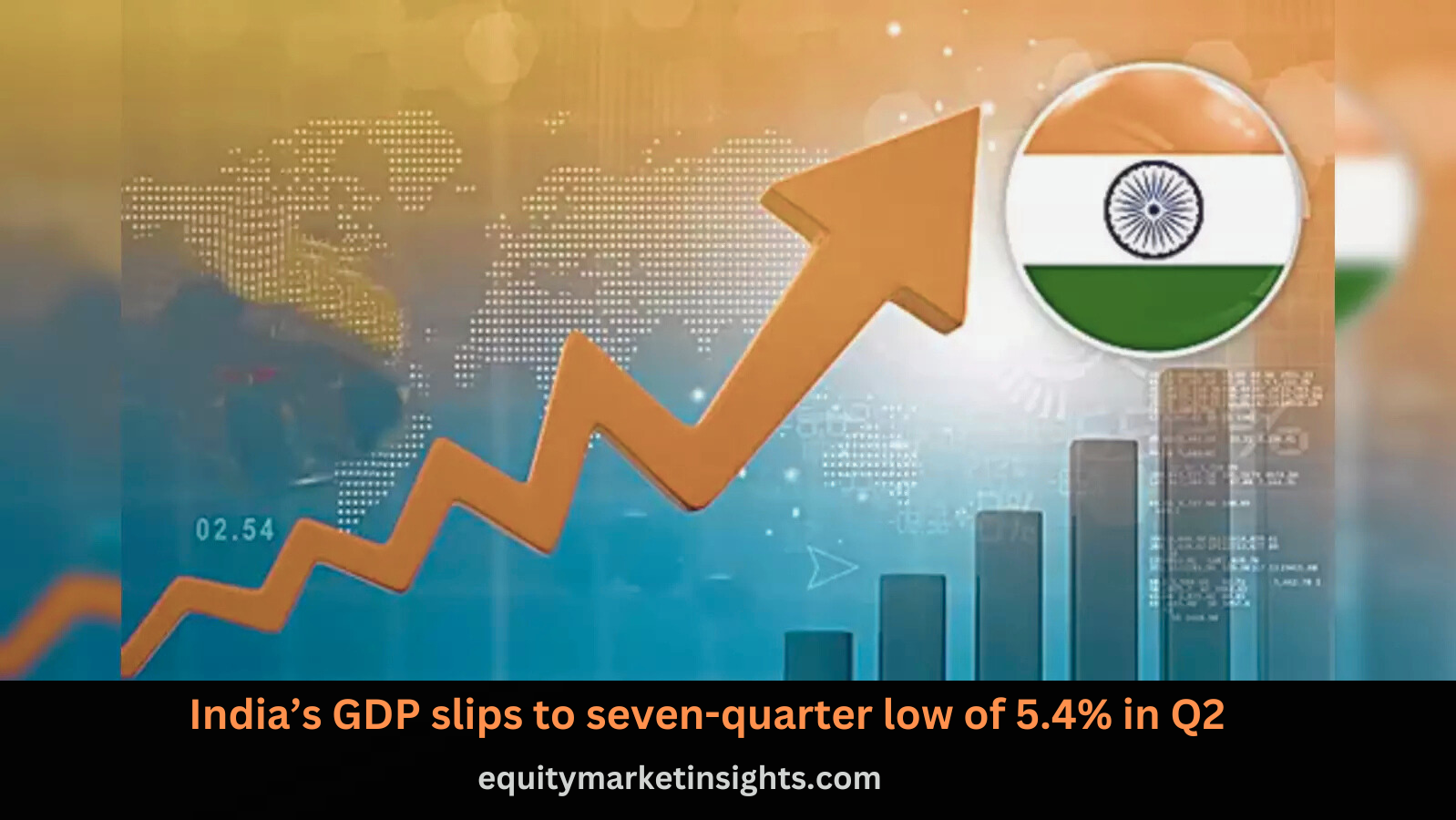India’s Gross Domestic Product (GDP) growth dropped to 5.4% in the second quarter of FY25, marking its lowest in seven quarters, as per data released by the Ministry of Statistics and Programme Implementation on November 29. This is a significant decline from the 6.7% growth recorded in the previous quarter and the 8.1% growth reported during the same period last year.

Missed Growth Expectations
The Q2 performance fell short of the median growth forecast of 6.5% by the MC poll of 11 economists. Projections in the poll ranged between 6.2% and 6.8%. Even the Reserve Bank of India (RBI) had anticipated higher GDP growth for FY25, pegging it at 7.2%, compared to the MC poll’s FY25 estimate of 6.8%.
Key Drivers of the Slowdown
Urban Consumption Weakness
Urban consumption continues to show signs of stress, largely due to rising food prices, which have eroded purchasing power. This has forced households to cut back on non-essential spending, further dampening economic activity.
High Borrowing Costs
Elevated borrowing costs have added pressure on consumers and businesses, slowing investments and consumption.
Sluggish Real Wage Growth
Despite a recovery in rural demand, real wage growth remains tepid, limiting disposable income and consumption levels.
Sectoral Performance: Bright Spot in Agriculture
While the overall economy witnessed a slowdown, the agriculture sector showed resilience. The agricultural Gross Value Added (GVA) grew by 3.5% in Q2, indicating strong sectoral performance. Economists anticipate agricultural growth to surpass 4% for FY25, a significant improvement compared to the 1.4% growth recorded in FY24.
Outlook for FY25
Despite the subdued Q2 numbers, experts remain cautiously optimistic about the full-year growth:
- MC Poll Expectation: GDP growth of 6.8% for FY25.
- RBI Forecast: Higher growth at 7.2%.
- Chief Economic Adviser: Predicted growth range between 6.5-7%, indicating confidence in recovery potential.
Challenges Ahead
The Indian economy, touted as the world’s fastest-growing major economy, faces the following hurdles:
- Persistent inflation pressures impacting household spending.
- Weak consumption trends in urban areas.
- Higher interest rates, deterring investments and credit growth.
However, with continued policy support and easing inflation in the coming months, the growth trajectory could stabilize.
Conclusion
India’s Q2 GDP numbers signal a challenging economic phase driven by weak consumption and high borrowing costs. However, robust growth in agriculture and signs of rural demand recovery offer hope for the months ahead. Policymakers must address inflation and wage growth concerns to reinvigorate the growth momentum.
